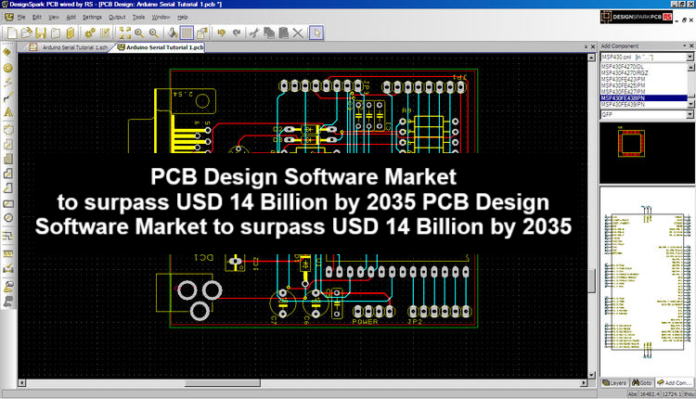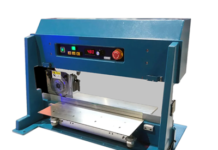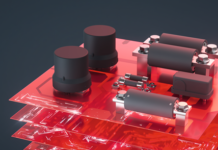
The rising adoption of industrial automation across the globe is anticipated to offer considerable opportunities for the growth of the PCB design software market, as automation and control systems are incomplete without the integration of PCBs. With the advent of the fourth industrial revolution, many countries are anticipated to adopt Industry 4.0, characterized by the fusion of technologies such as artificial intelligence, gene editing, and advanced robotics. The primary factor responsible for adopting newer industrial technologies and digital transformation solutions is the intense competition among industries and evolving end-user requirements. For example, field devices like motors and sensors offer opportunities for the automotive industry to react faster to market requirements, reduce manufacturing downtimes, enhance the efficiency of supply chains, and expand productivity. For instance, the number of industrial robots in the UK increased to around 23,000 in 2020, according to the International Federation of Robotics, as about 2,205 of them were deployed. The UK was among the top 15 countries in the world for industrial robot sales between 2020 and 2021.
Moreover, according to a survey done by ABB Robotics, of around 250 SMEs and manufacturers, 81.2% were considering incorporating robotics into their operations to combat issues with workforce needs and supply chain disturbances. To provide industrial systems combined with high-end technologies, the systems are required to integrate technologically advanced PCBs, for which top-notch PCB design software is required. Thus, with the rising demand for industrial control and automated systems, the demand for PCBs will also increase, resulting in higher demand for PCB design software.
Some of the major growth factors and challenges that are associated with the growth of the global (printed circuit board )PCB design software market are:
Growth Drivers:
- Growing Demand for PCBs in Semiconductor Applications
- Advent of the Internet of Things (IoT).
Challenges:
Easy availability of open-source PCB design software and the quick introduction of new technologies are some of the major factors anticipated to hamper the growth of the global printed circuit board (PCB) design software Market.
By component, the global printed circuit board (PCB) design software market is segmented into solution and services. By the end of 2035, the solution segment is anticipated to garner the largest revenue with a significant CAGR. The increased use of consumer electronics points to a developing market trend for PCB-design software, which eventually necessitates services tied up to software deployment. Hence, driving the growth of the segment.
By region, the Asia Pacific region, PCB design software is expected to grow at a remarkable CAGR over the forecast period due to the rise of the Internet of Things (IoT) and electronic gadgets also raising market growth. Designing electronic items with IoT capabilities is now necessary in order to compete in the market. IoT advancements not only provided various new product categories of electronic devices but also drive innovators to rethink how consumers engaged with traditional tech-less products.
This report also provides the existing competitive scenario of some of the key players of the global (printed circuit board) PCB design software market which includes company profiling of Cadence Design Systems, Inc., Siemens EDA, Mentor (A Siemens Business), Zuken Inc., Altium Limited, WestDev Ltd. (Pulsonix), Novarm Limited (DipTrace), Autodesk Inc., Synopsys, Inc., KiCad and other major players.



















